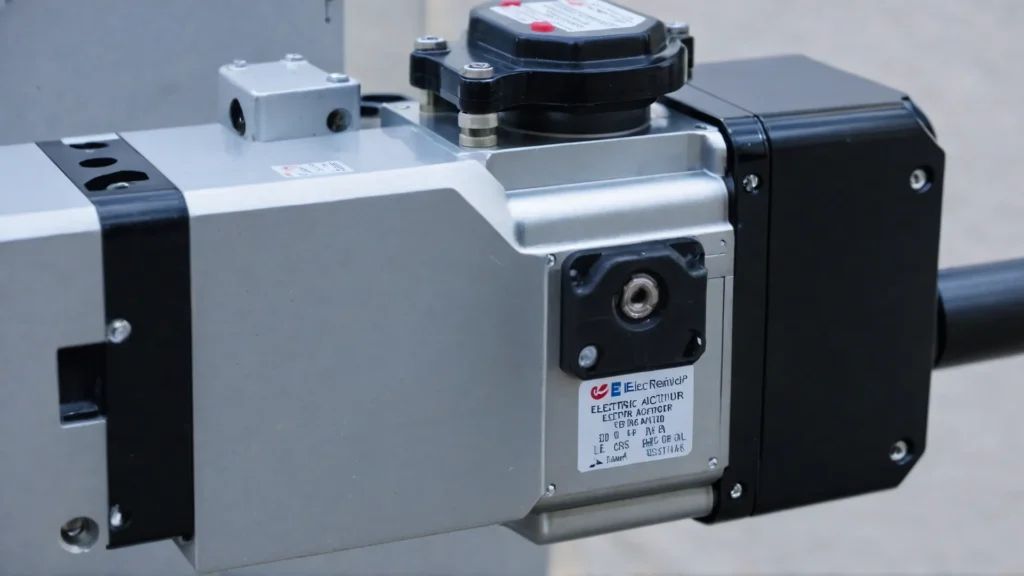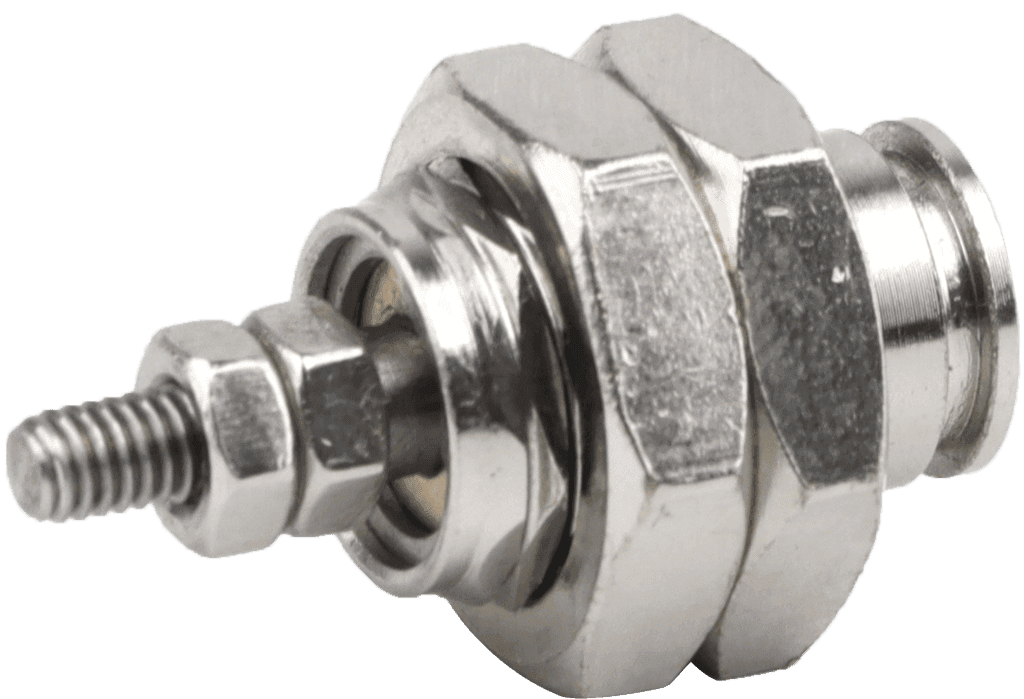How to Check If Hydraulic Cylinder Is Leaking Internally
What is Internal Leakage in Hydraulic Cylinders
Internal leakage in hydraulic cylinders occurs when hydraulic fluid bypasses the seals or O-rings inside the cylinder, allowing it to flow from chamber to another without doing any useful work. This can lead to reduced efficiency, slower operation, and decreased lifting capacity.
Symptoms of Internal Hydraulic Cylinder Leaks
Cylinder Drift or Failure to Hold Position Under Load
One telltale sign of an internal hydraulic cylinder leak is cylinder drift, where the cylinder slowly loses its position when under a load. For example, if you have a hydraulic lift that gradually sinks down when it’s supposed to be holding something up, there’s a good chance the cylinder is leaking internally. The leak allows hydraulic fluid to slowly escape, which reduces pressure and causes the cylinder to retract.
Slow Operation or Loss of Power
Internal leaks can also make a hydraulic cylinder operate slowly or with less power than normal. As fluid leaks out of the cylinder, less of it is available to transfer force and do the necessary work. This means the cylinder will move more slowly and with reduced strength. If a hydraulic system seems underpowered despite the pump and valves working properly, the culprit is often an internal cylinder leak.
Overheating of the Hydraulic System
Another common symptom of internal cylinder leaks is overheating of the overall hydraulic system. When fluid continually leaks out of the cylinder, the hydraulic pump has to work harder to maintain proper fluid levels and pressure. This constant strain on the pump generates excess heat. So if a hydraulic system is running unusually hot and no other problems are found, checking the cylinders for internal leaks is advisable.
Erratic or Jerky Cylinder Movement
Internal leaks can also cause a hydraulic cylinder to move erratically or jerk around. The leaking fluid disrupts the precise control of flow into and out of the cylinder. This leads to sudden, jarring movements rather than smooth operation. Leaky cylinder seals are frequently the reason behind cylinders that judder or move unpredictably.
Unusual Noises Like Hissing or Knocking
Internal cylinder leaks often create unusual noises during operation. Hissing, whistling, or sputtering sounds typically indicate fluid is escaping through damaged seals or worn piston rings. Knocking noises can happen when leaks cause air to get trapped in the cylinder, leading to cavitation. Any odd sounds coming from a hydraulic cylinder warrant a close inspection for internal leakage.

How To Test A Hydraulic Cylinder
Visual Inspection Methods
- Oil Leaks: Check for signs of hydraulic oil leaking, such as puddles, drips around the cylinder, or oil stains, especially around seals and joints.
- Damage to the Cylinder: Inspect for physical damage like dents, cracks, or corrosion which can compromise the cylinder’s integrity and lead to internal leaks.
- Wear and Tear: Look for signs of excessive wear around seals and bearing surfaces, which may allow oil to bypass them and cause internal leaks.
- Loose or Damaged Fittings: Ensure all cylinder fittings and connections are tight and secure to prevent oil escape, indicating possible internal leaks.
- Fluid Level: Check the hydraulic system’s fluid level using a sight glass or dipstick; frequent low levels suggest internal leaks.
- Cylinder Movement: Observe the cylinder’s operation; erratic movements, sticking, or failure to maintain position under load may signal an internal leak.
Pressure Testing Procedure
Step 1: Safety Precautions
Before beginning the pressure testing procedure, make sure the hydraulic system is depressurized and the machine is shut off. Disconnect the power source to prevent accidental startup. Put on safety glasses and gloves to protect yourself.
Step 2: Locate the Cylinder
Find the hydraulic cylinder that you suspect is leaking internally. Disconnect it from the hydraulic system and plug or cap the hydraulic lines to keep them clean.
Step 3: Clean the Cylinder
Use a clean cloth to wipe down the outside of the cylinder. Remove any dirt, grease, or oil that could affect the testing process.
Step 4: Connect the Test Equipment
Attach a pressure gauge and a hydraulic pump to the cylinder’s inlet port. The pressure gauge should be able to measure the cylinder’s maximum rated pressure.
Step 5: Extend the Cylinder
Fully pump hydraulic fluid into the cylinder slowly until it reaches full extension. Watch for any unusual sounds or uneven movement during this process.
Step 6: Check for Pressure Loss
Once the cylinder is fully extended, stop pumping and watch the pressure gauge. If the pressure stays steady, the cylinder is not leaking internally. If the pressure drops, there is an internal leak.
Step 7: Retract the Cylinder
If the pressure remains constant, gradually release it and let the cylinder retract. Look for any signs of leakage or irregular motion during retraction.
Step 8: Double-Check the Results
Repeat steps 5-7 several times to verify the results. If the pressure consistently falls during the holding phase, the cylinder has an internal leak.

Flow Testing Methods
Step 1: Set up the hydraulic system
Make sure the hydraulic system is connected and all components are in good working order.
The cylinder being tested should be fully retracted.
Ensure there is sufficient hydraulic fluid in the reservoir.
Step 2: Install a flow meter
Install a flow meter in the line between the directional control valve and the cylinder.
The flow meter will measure the amount of hydraulic fluid flowing to the cylinder.
Step 3: Pressurize the system
Start the hydraulic pump and allow the system to reach its normal operating pressure.
Make sure the directional control valve is in the neutral position, so no fluid is being directed to the cylinder.
Step 4: Check for internal leakage
Slowly shift the directional control valve to extend the cylinder.
Watch the flow meter as the cylinder extends. If the cylinder not leaking internally, the flow rate should remain steady.
If the flow rate increases as the cylinder extends, this indicates an internal leak. The cylinder is bypassing fluid from one side of the piston to the other.
Step 5: Confirm the leak
Shift the directional control valve to retract the cylinder.
Again, watch the flow meter. An internally leaking cylinder will show an increased flow rate as it retracts.
If the flow rate remains high in both directions, the cylinder is definitely leaking internally and should be repaired or replaced.
Step 6: Check the leak rate (optional)
To determine the severity of the internal leak, measure the time it takes for the cylinder to drift from the fully extended to the fully retracted position without any input from the directional control valve.
The faster the cylinder drifts, the greater the internal leak.

Temperature Monitoring Techniques
Use an Infrared Thermometer
Point the thermometer at different parts of the hydraulic cylinder, focusing on areas where internal leaks are likely to occur, such as the cylinder head, rod, and ports.
Compare the temperatures of different sections. If one area is significantly hotter than the others, it may indicate an internal leak.
Install Temperature Sensors
Temperature sensors, such as thermocouples or resistance temperature detectors (RTDs), can be permanently installed on the hydraulic cylinder.
Place the sensors at key locations, such as near the cylinder head, rod, and ports.
Connect the sensors to a monitoring system that can continuously record and display temperature readings.
Set up alerts to notify you if the temperature exceeds a predetermined threshold, which may indicate an internal leak.
Use a Thermal Imaging Camera
A thermal imaging camera captures the infrared radiation emitted by an object and creates a visual representation of the temperature distribution.
Point the camera at the hydraulic cylinder and scan the entire surface, paying close attention to areas prone to internal leaks.
Look for hot spots or unusual temperature patterns, which may indicate the presence of an internal leak.
Thermal imaging cameras can be particularly useful for detecting leaks in hard-to-reach or visually obstructed areas.
Conduct Regular Temperature Checks
Establish a routine for regularly checking the temperature of your hydraulic cylinder.
Record the temperature readings at the same locations each time to create a baseline for comparison.
Compare the current readings to previous ones to identify any sudden or gradual temperature changes that may indicate an internal leak.
Use Temperature Monitoring Software
Some hydraulic systems come equipped with temperature monitoring software that can help detect internal leaks.
The software typically collects data from temperature sensors installed on the cylinder and analyzes it for anomalies.
Set up the software to alert you if the temperature deviates from the normal range, which may indicate an internal leak.

Oil Discharge and Unloading Test
Step 1: Prepare the hydraulic cylinder
Ensure the hydraulic cylinder is disconnected from the system and placed securely on a workbench or suitable surface.
Clean the exterior of the cylinder to remove any dirt or debris.
Step 2: Fill the cylinder with oil
Using a clean hydraulic oil, fill the cylinder through the appropriate port until it is full.
Make sure to use the correct type of oil as specified by the manufacturer.
Step 3: Close the ports
Once the cylinder is filled with oil, close all the ports securely to prevent any leakage.
Step 4: Apply pressure to the cylinder
Using a hydraulic pump, apply pressure to the cylinder.
The pressure should be within the manufacturer’s specified range for the cylinder.
Step 5: Monitor the cylinder for leaks
While the cylinder is under pressure, closely observe it for any signs of oil leakage.
Pay attention to the seals, ports, and any other potential leakage points.
Step 6: Perform the unloading test
After applying pressure, use a valve to unload the pressure from the cylinder.
During the unloading process, observe the cylinder for any signs of oil discharge or leakage.
Step 7: Repeat the test
To ensure accurate results, repeat the oil discharge and unloading test at least two more times.
Step 8: Analyze the results
If no oil discharge or leakage is observed during the tests, the hydraulic cylinder is likely not leaking internally.
However, if oil discharge or leakage is present, the cylinder may have internal damage, worn seals, or other issues that need to be addressed.
When to Seek Professional Cylinder Repair or Replacement
- Significant loss of power: If an internal leak is significantly reducing hydraulic power, impacting machinery performance and efficiency, seek repair or replacement by a qualified technician promptly.
- Rapid fluid loss: Address rapid hydraulic fluid depletion due to internal leaks promptly to prevent further damage and potential system failure.
- Visible damage: Have a professional assess visible cylinder damage like dents, cracks, or corrosion to determine repair or replacement needs.
- Safety concerns: Immediately address leaking cylinders posing safety risks to operators or the environment to prevent accidents and hazards.
- Critical applications: Prioritize professional repair or replacement for cylinders in critical systems or demanding applications to ensure reliability and safety.
In conclusion
Checking for internal leaks in a hydraulic cylinder is crucial for maintaining optimal performance and preventing costly repairs.
By following these simple steps, you can quickly identify and address any leakage issues.
Don’t wait until it’s too late—take action now to ensure your hydraulic system operates at its best.
Contact our experts today for professional assistance.



